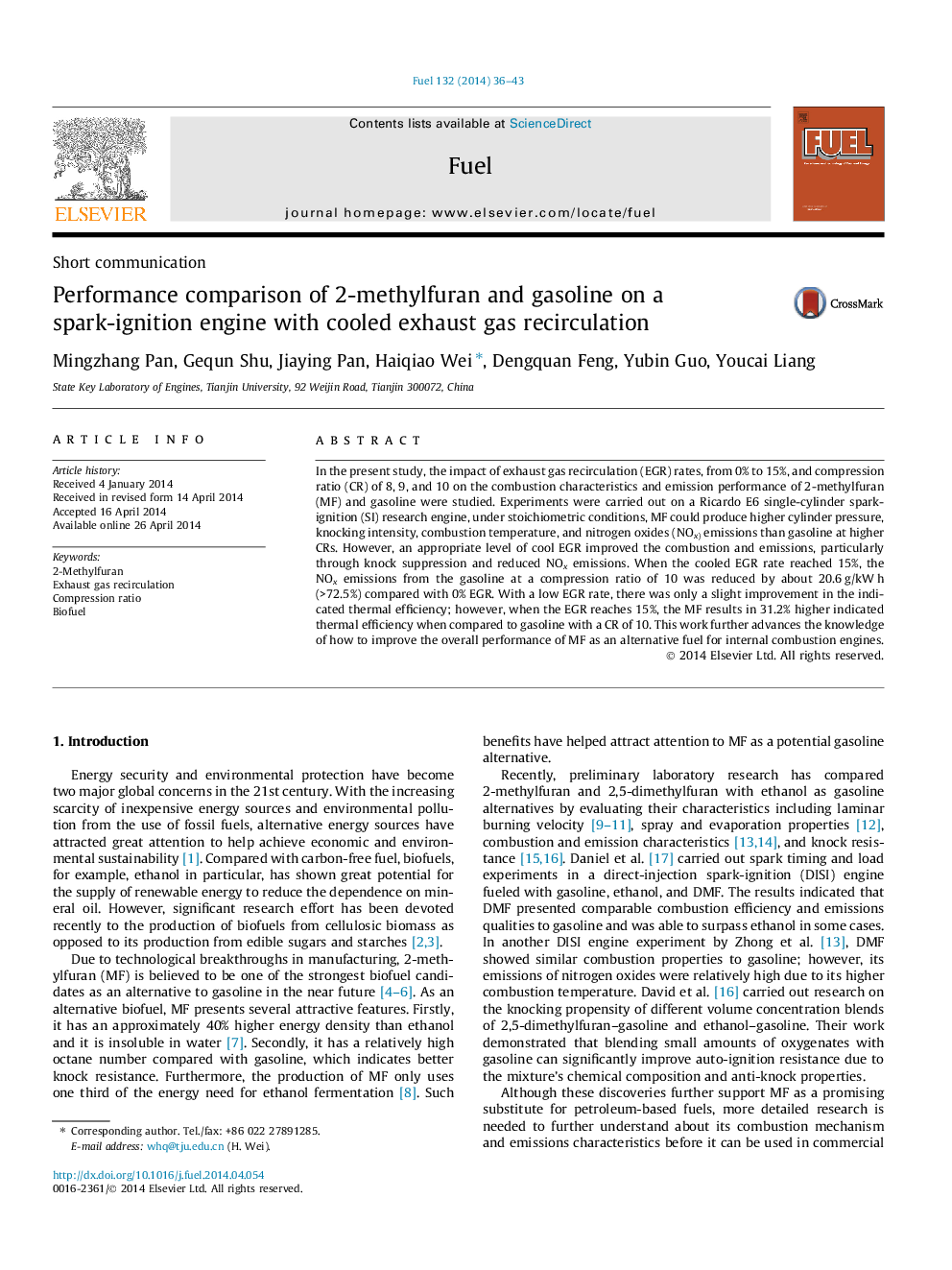| Article ID | Journal | Published Year | Pages | File Type |
|---|---|---|---|---|
| 206210 | Fuel | 2014 | 8 Pages |
In the present study, the impact of exhaust gas recirculation (EGR) rates, from 0% to 15%, and compression ratio (CR) of 8, 9, and 10 on the combustion characteristics and emission performance of 2-methylfuran (MF) and gasoline were studied. Experiments were carried out on a Ricardo E6 single-cylinder spark-ignition (SI) research engine, under stoichiometric conditions, MF could produce higher cylinder pressure, knocking intensity, combustion temperature, and nitrogen oxides (NOx) emissions than gasoline at higher CRs. However, an appropriate level of cool EGR improved the combustion and emissions, particularly through knock suppression and reduced NOx emissions. When the cooled EGR rate reached 15%, the NOx emissions from the gasoline at a compression ratio of 10 was reduced by about 20.6 g/kW h (>72.5%) compared with 0% EGR. With a low EGR rate, there was only a slight improvement in the indicated thermal efficiency; however, when the EGR reaches 15%, the MF results in 31.2% higher indicated thermal efficiency when compared to gasoline with a CR of 10. This work further advances the knowledge of how to improve the overall performance of MF as an alternative fuel for internal combustion engines.
